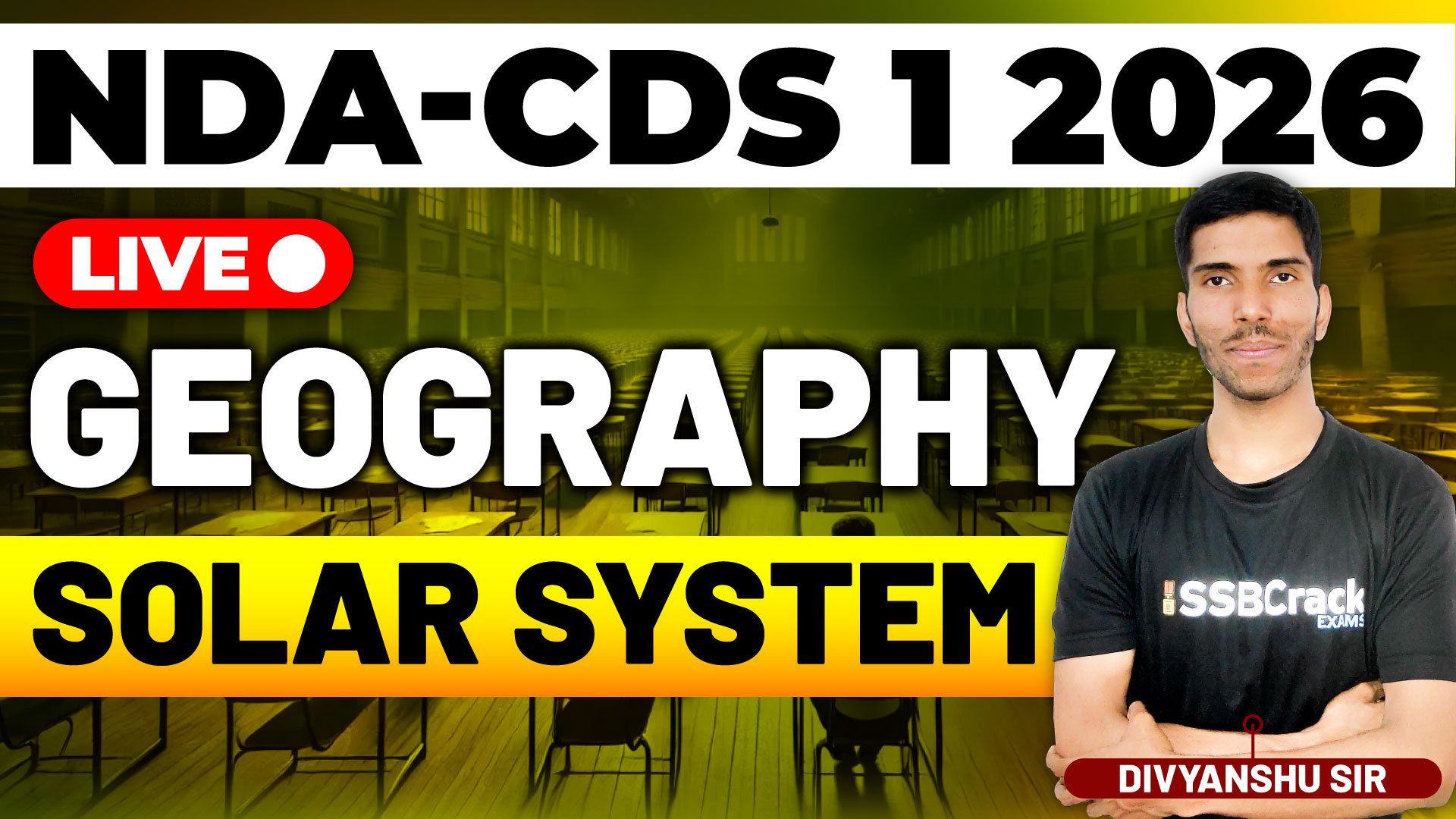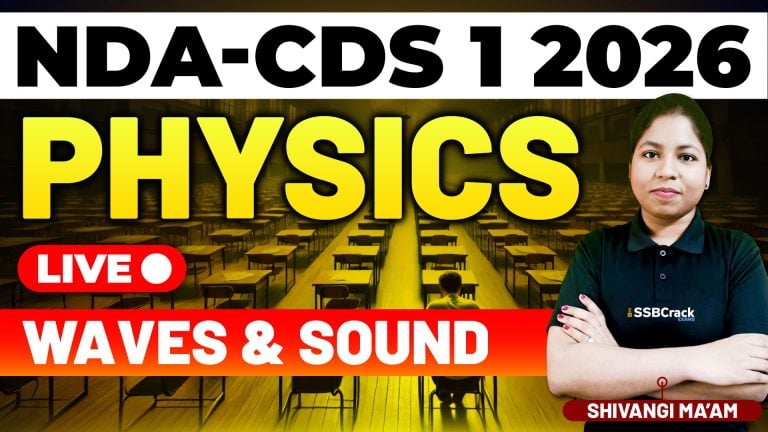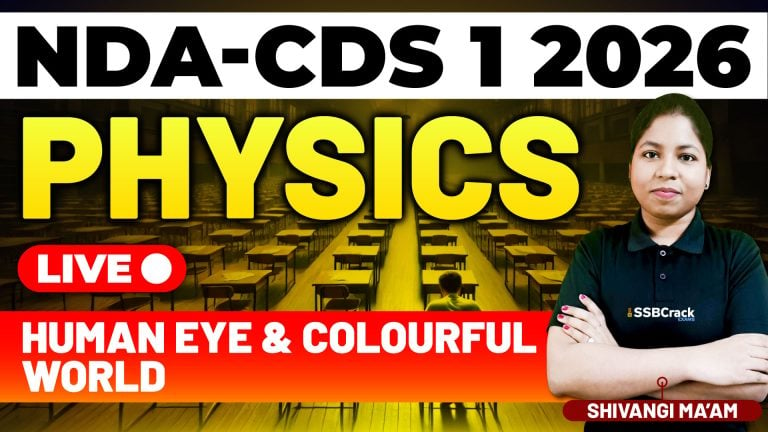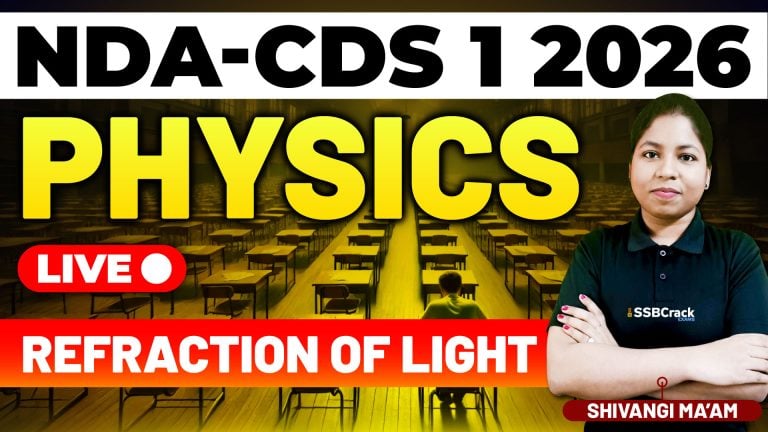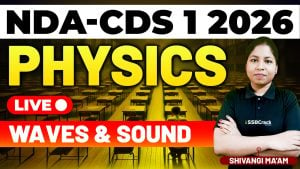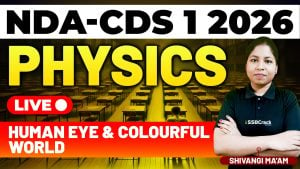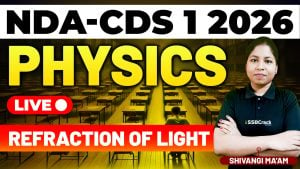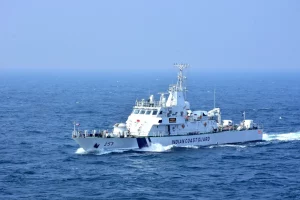The Solar System is a vast and complex celestial system centered around the Sun, which is a medium-sized star located in the Milky Way Galaxy. It comprises the Sun, eight planets, their moons, dwarf planets, asteroids, comets, meteoroids, and other celestial objects. Understanding the structure and components of the Solar System is essential for NDA and CDS aspirants, as it forms a core part of general science and geography.
NDA & CDS 1 2026 Exam – Geography: Solar System
Formation of the Solar System
The Solar System was formed about 4.6 billion years ago from a giant rotating cloud of gas and dust called the solar nebula. Due to the force of gravity, most of the material came together to form the Sun, while the remaining matter flattened into a disk and formed the planets, moons, and other bodies.
The Sun
- The Sun is the center of the Solar System and contains about 99.86% of its total mass.
- It is composed mainly of hydrogen (≈74%) and helium (≈24%).
- The Sun produces energy through nuclear fusion, converting hydrogen into helium.
- Its surface temperature is approximately 5,500°C, while the core temperature exceeds 15 million°C.
- The Sun is about 1.39 million km in diameter and lies 149.6 million km away from Earth (1 Astronomical Unit – AU).
Planets of the Solar System
There are eight planets in the Solar System, classified into two groups:
1. Inner (Terrestrial) Planets:
These planets are rocky, small, and located closer to the Sun.
- Mercury – Smallest and closest to the Sun; no atmosphere.
- Venus – Hottest planet due to carbon dioxide-rich atmosphere; known as the “Earth’s Twin”.
- Earth – The only planet known to support life; has one natural satellite, the Moon.
- Mars – Known as the “Red Planet” due to iron oxide; has two moons – Phobos and Deimos.
2. Outer (Jovian) Planets:
These are giant planets made mostly of gases and ice.
- Jupiter – Largest planet; famous for its “Great Red Spot”; has 95 known moons.
- Saturn – Known for its spectacular ring system; second-largest planet.
- Uranus – Rotates on its side; has a blue-green color due to methane.
- Neptune – Farthest planet; has strong winds and storms; similar to Uranus in composition.
Dwarf Planets
Dwarf planets orbit the Sun but are smaller than the main planets and have not cleared their orbits of other debris.
- Pluto (reclassified in 2006 by the IAU)
- Eris
- Haumea
- Makemake
- Ceres (located in the Asteroid Belt)
Other Celestial Bodies
- Asteroids: Rocky bodies mainly found between Mars and Jupiter in the Asteroid Belt.
- Comets: Made of ice, dust, and rocky material; develop tails when they approach the Sun. Example – Halley’s Comet.
- Meteoroids: Small rocky particles; when they enter the Earth’s atmosphere and burn up, they are called meteors, and if they reach the surface, meteorites.
Important Facts for NDA/CDS Exam
- Largest Planet: Jupiter
- Smallest Planet: Mercury
- Hottest Planet: Venus
- Coldest Planet: Neptune
- Planet with Rings: Saturn (most visible)
- Blue Planet: Earth
- Red Planet: Mars
- Greenhouse Planet: Venus
- Fastest Orbiting Planet: Mercury
- Slowest Orbiting Planet: Neptune
- Planet Discovered by Telescope: Uranus (by William Herschel, 1781)
